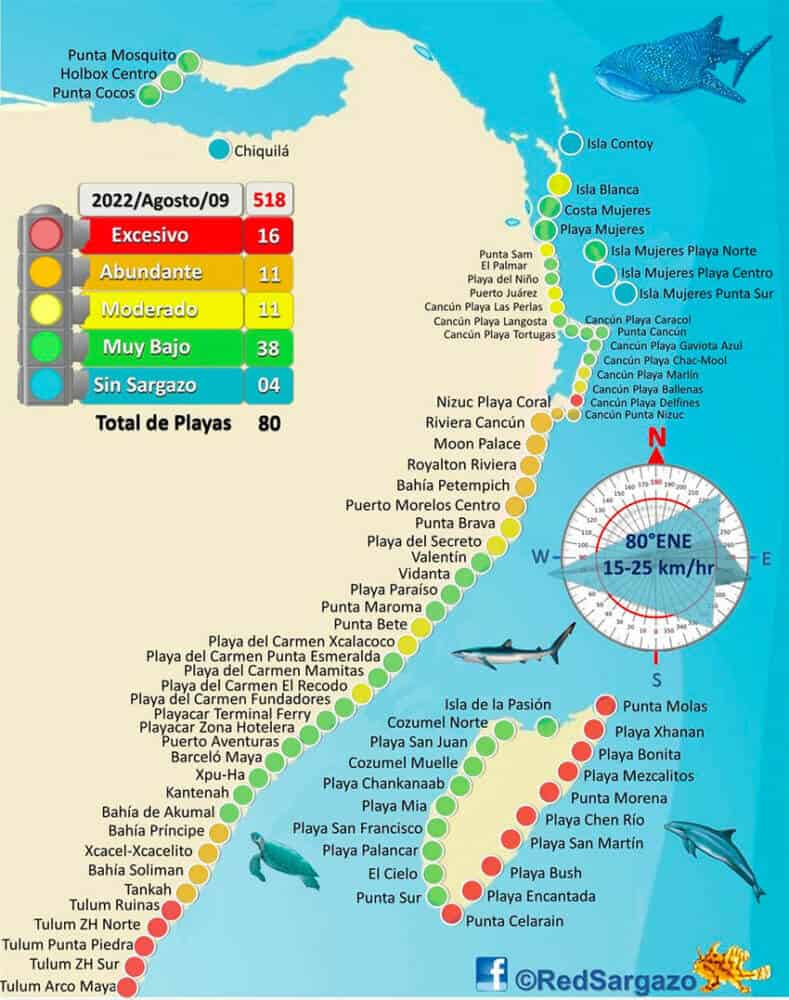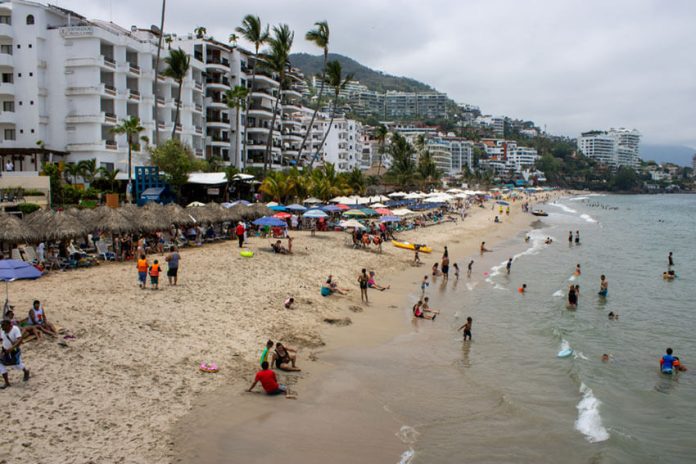Passenger numbers at airports in three of Mexico’s most popular beach destinations exceeded 2019 levels in July, providing more evidence that the tourism sector has recovered from the pandemic-induced downturn.
Data from airport operators shows that passengers numbers in Cancún, Los Cabos and Puerto Vallarta were significantly higher last month than in July 2019.
Over 2.87 million passengers passed through Cancún airport, a 20% increase compared to three years ago, while the number of people who used Los Cabos airport rose 25% to over 667,000. Passenger traffic at Puerto Vallarta rose by an even higher 40% to almost 559,000.
The news website Expansión reported that Cancún airport – which also receives tourists headed for other Quintana Roo destinations such as Playa del Carmen and Tulum – had its best July ever for domestic passengers, with numbers exceeding 1 million for the first time.
The publication of the data comes a week after the federal Tourism Ministry reported that over 10.2 million international tourists flew into Mexico in the first six months of the year, an 83% increase compared to the first half of last year and a 1.5% uptick compared to the same period of 2019.
The airports in Guadalajara, Tijuana, Mérida and Oaxaca city also had more passengers last month than in July 2019, according to data published by Expansión. However, passenger numbers at the Monterrey and Acapulco airports declined.
An analyst for the Monex financial group predicted that airports operated by the Southeast Airport Group – among which are those in Cancún, Cozumel, Huatulco, Mérida, Oaxaca city and Veracruz – will continue to see high numbers of passengers in the remainder of 2022.
“We believe that a favorable growth trend will be maintained, the result of a greater appetite for pleasure trips as well as a greater offering of airline routes,” Brian Rodríguez said.

Another beach destination where tourists have flocked this summer is Mazatlán, which is expected to welcome well over half a million visitors in July and August.
In Cancún, thousands of tourists are thronging Caribbean coast beaches on a daily basis, despite the presence of sargassum. “We’re reaching between 5,000 and 6,000 people on all our beaches,” said Francisco Díaz Lara, the federal maritime land zones (Zofemat) director in Benito Juárez, the municipality where Cancún is located.
“They’re figures that we were expecting for this season, obviously … [there is] favorable weather, that’s why a large number of swimmers are gathering [on the beaches],” he said. “… The beaches are the main attraction in this municipality.”
Díaz said that the presence of sargassum – a brown seaweed that emits a foul odor when it rots – isn’t dissuading tourists from going to the beach. Sargaceros, or sargassum shovelers, remove the seaweed from beaches on a daily basis, although they sometimes struggle to keep up.
One beach where sargassum has overwhelmed the sargaceros is Playa Delfines, which was the only beach in Cancún with excessive quantities of the seaweed on Tuesday, according to a map published by the Quintana Roo Sargassum Monitoring Network.
“The sargassum is removed but it keeps arriving from the sea,” Díaz said. “It caused us a lot of problems last weekend, … we removed 165 tonnes in two days.”
Published Tuesday, the network’s latest map shows that 16 Quintana Roo beaches have excessive quantities of sargassum, 10 of which are on the east coast of Cozumel. Five are in Tulum, where authorities began installing anti-sargassum barriers last week.
The installation of the barriers, which have a combined length of 2.4 kilometers, began in the Tulum National Park a few months later than originally planned, according to the newspaper La Jornada Maya.
Tulum Zofemat director Melitón González Perez said the navy is working with state and municipal authorities to put the barriers in place. “We intend to place 2,400 meters of barrier in front of the National Park beaches to try to contain the arrival of sargassum,” he said.
With reports from Expansión, Noticaribe, La Jornada Maya and Reportur
